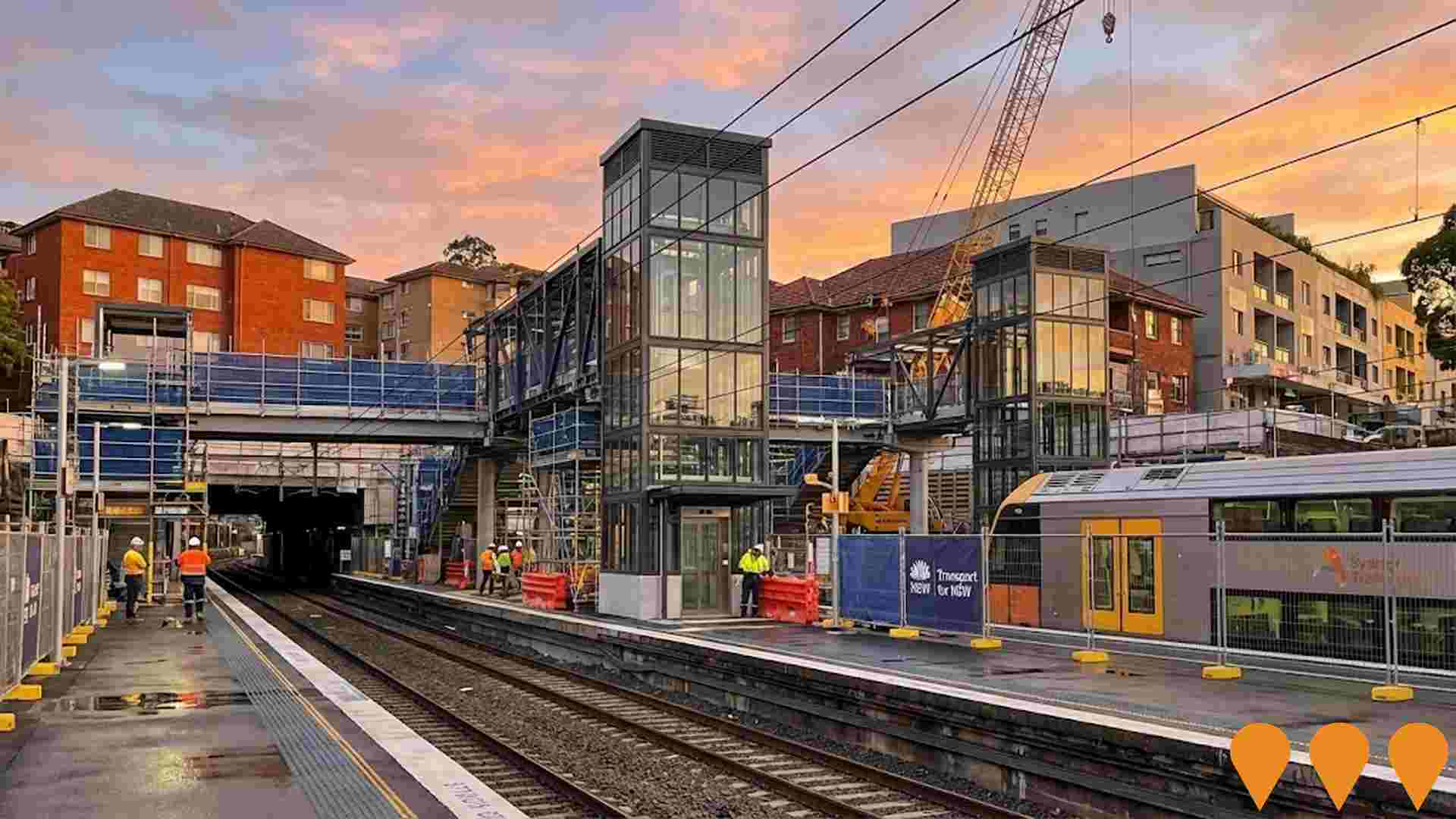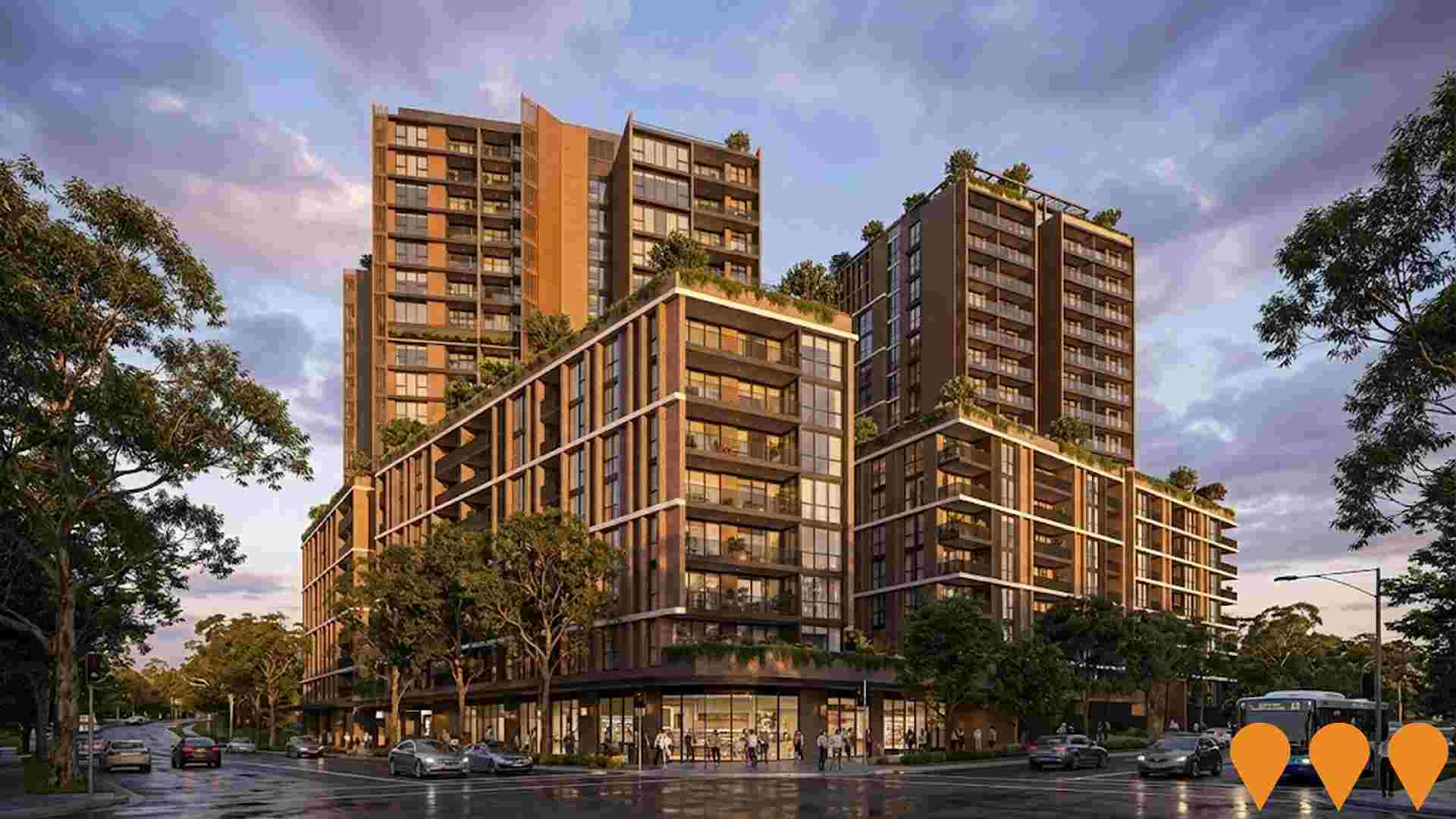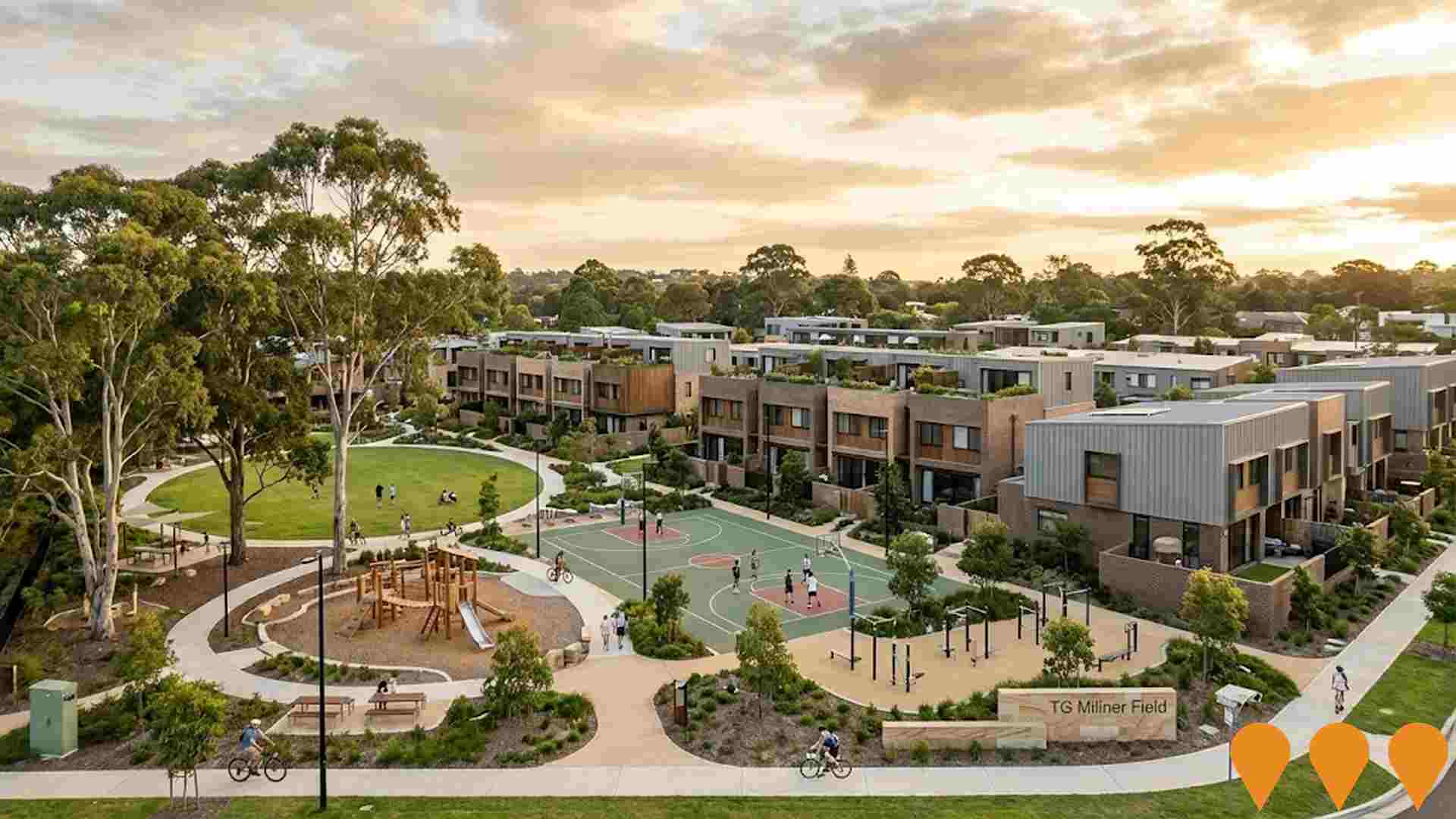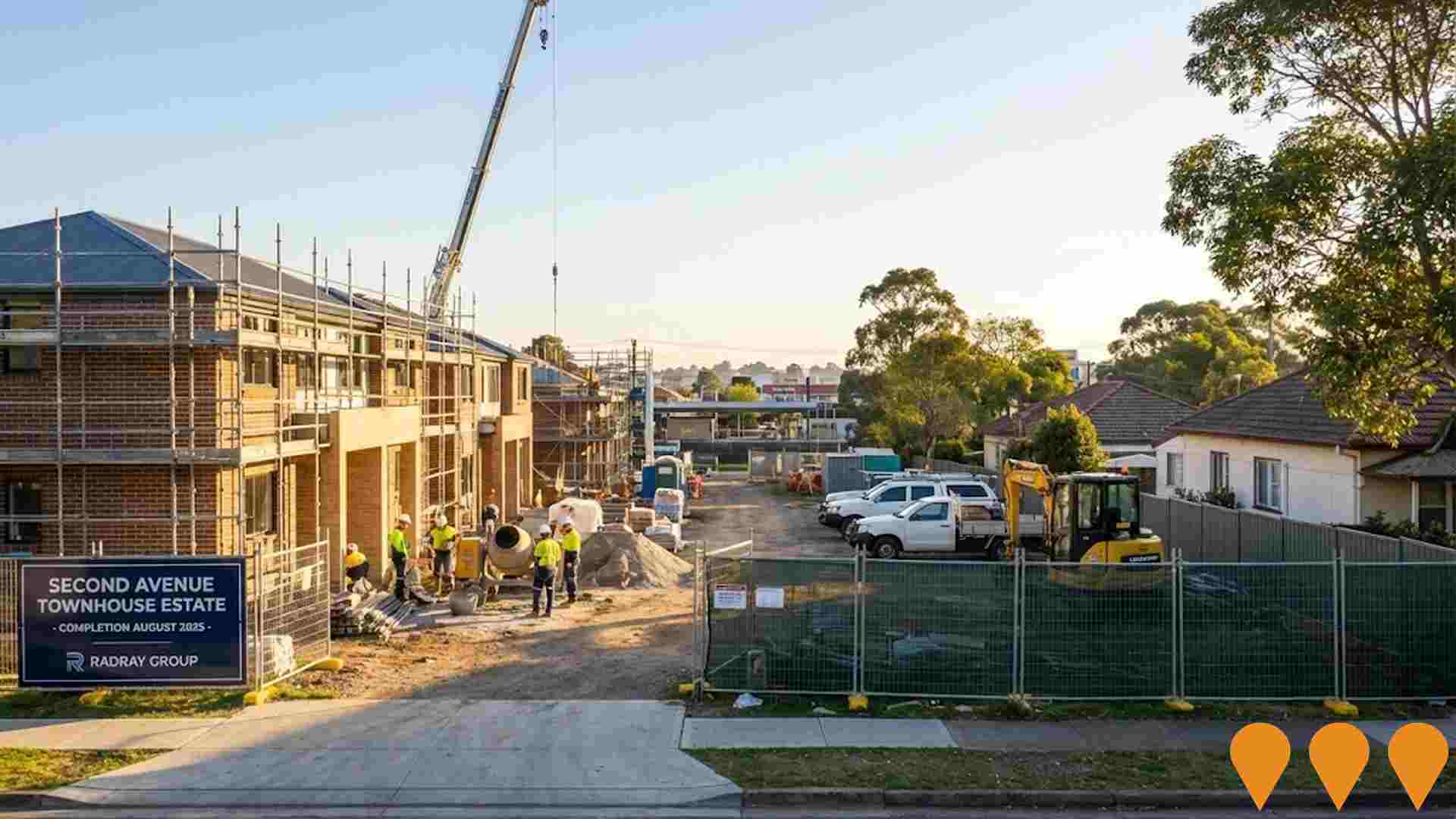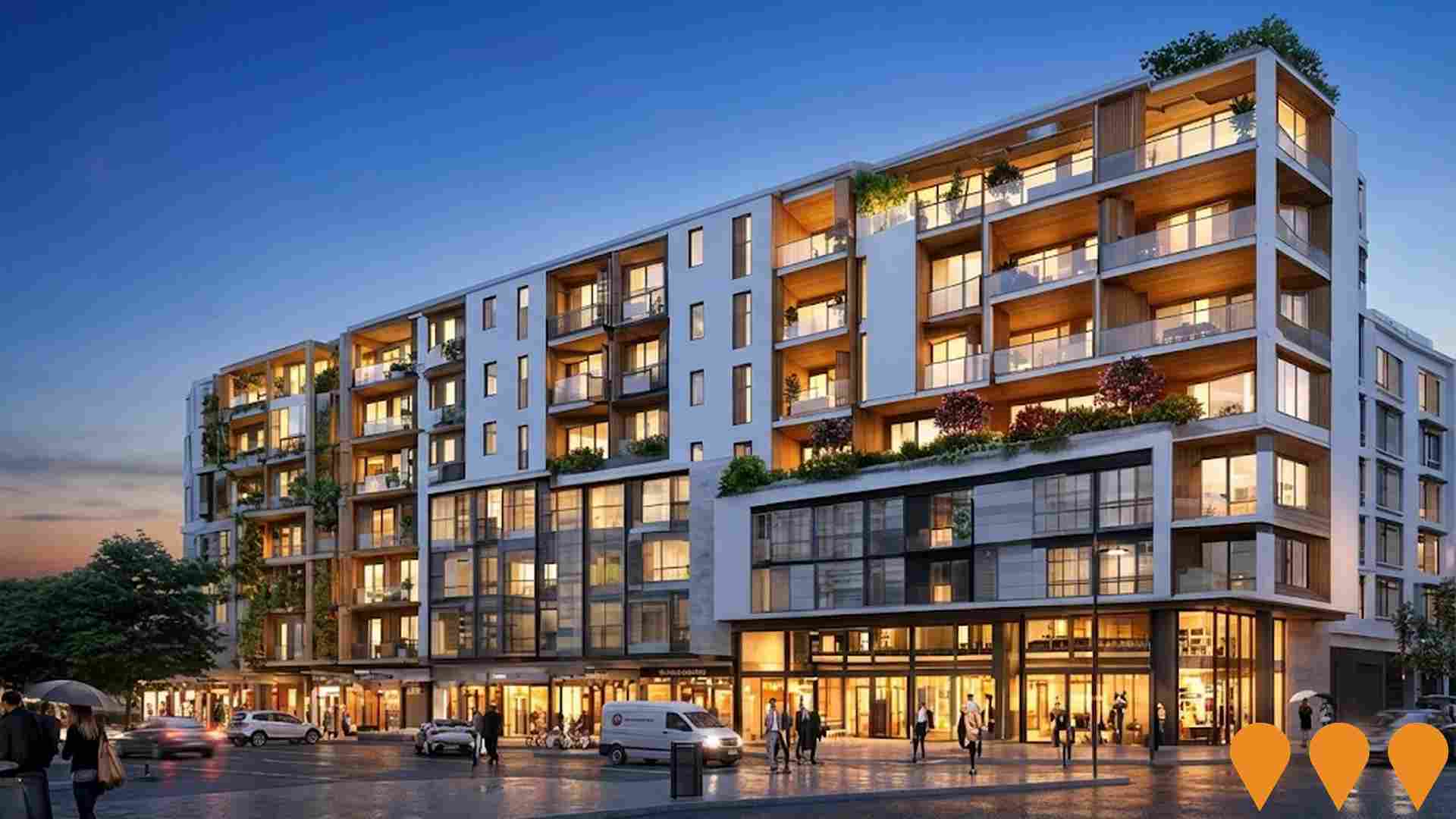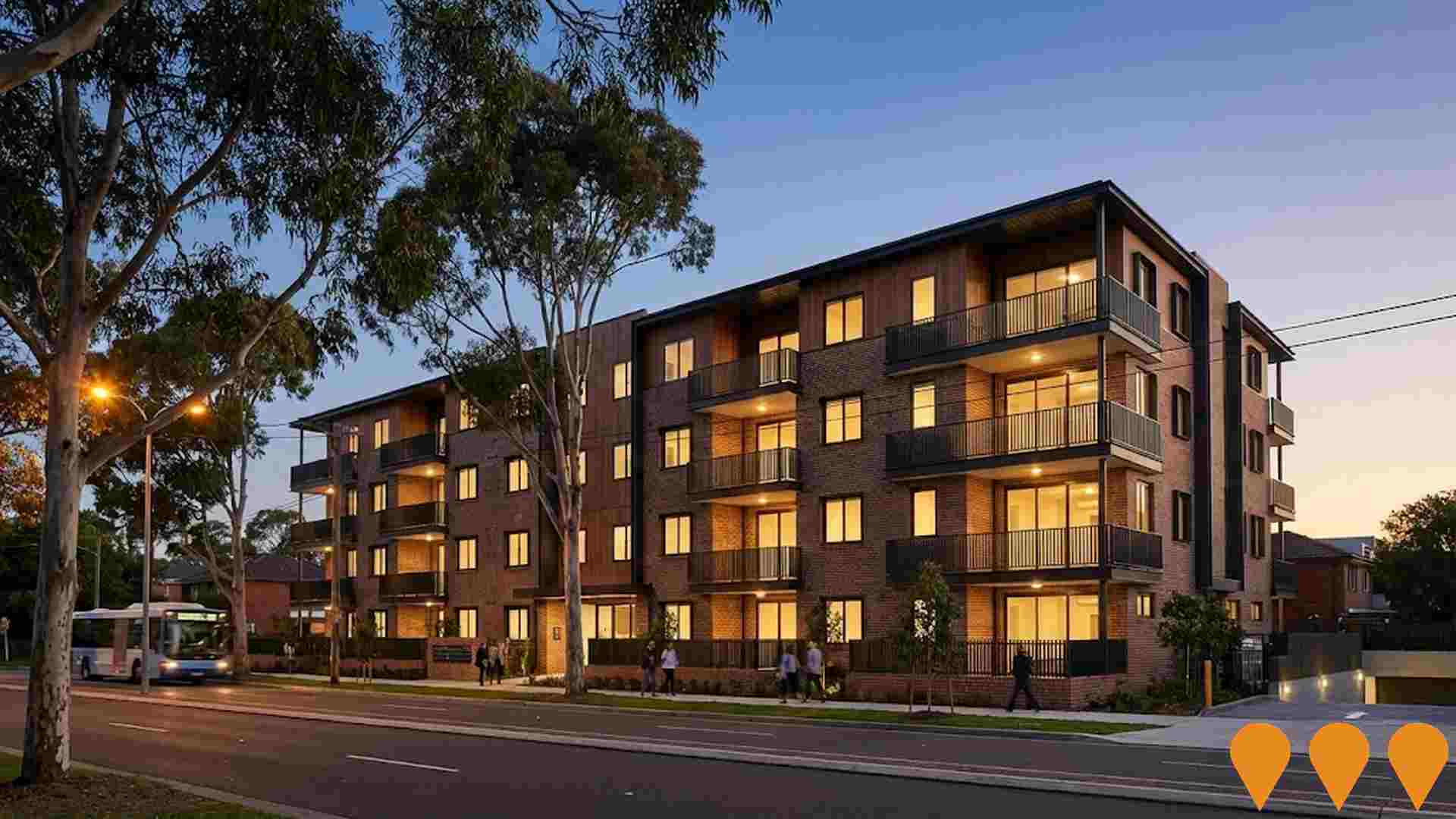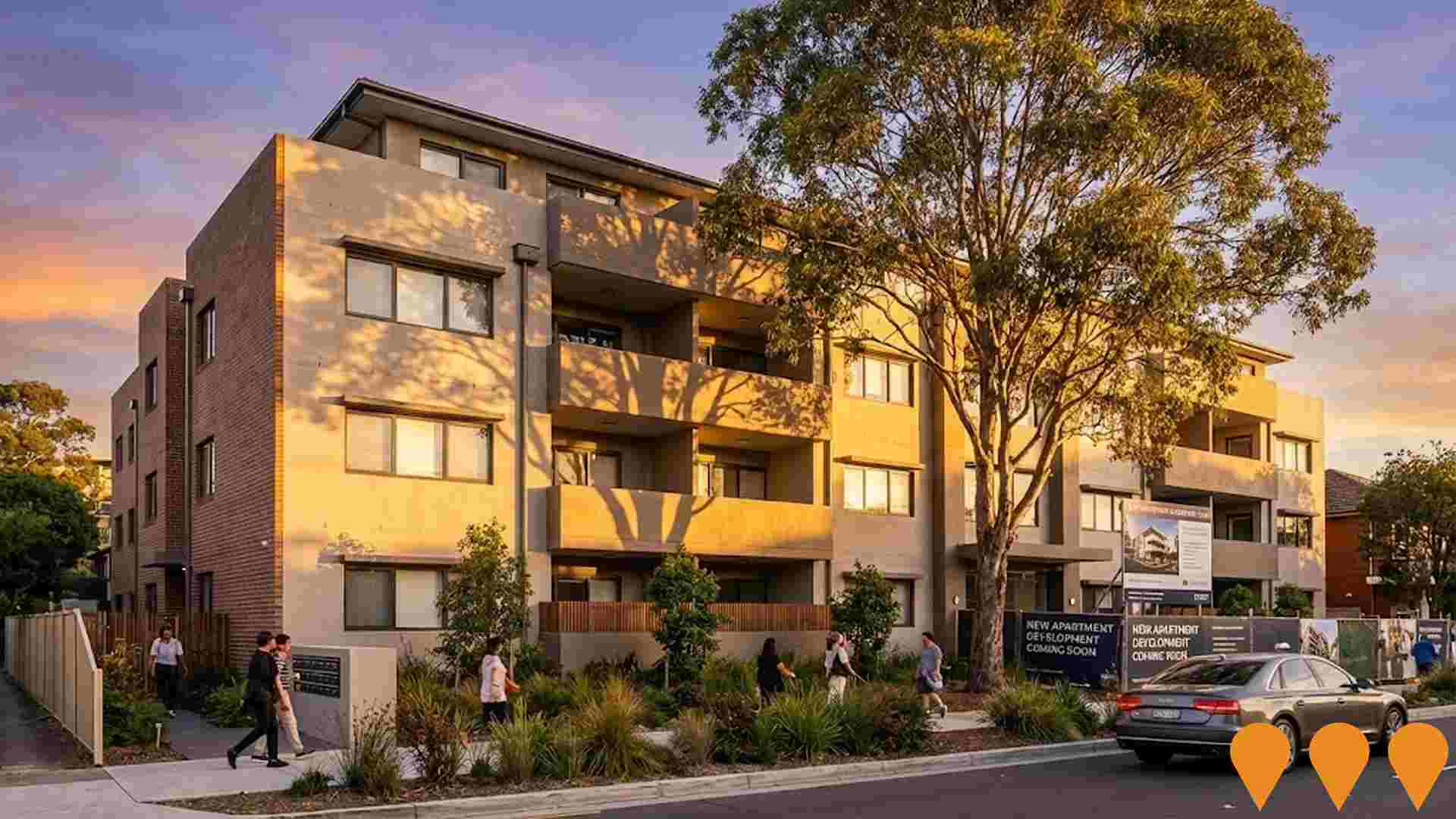Chart Color Schemes
est. as @ -- *
ABS ERP | -- people | --
2021 Census | -- people
Sales Activity
Curious about local property values? Filter the chart to assess the volume and appreciation (including resales) trends and regional comparisons, or scroll to the map below view this information at an individual property level.
Find a Recent Sale
Sales Detail
Population
Population growth drivers in Eastwood are strong compared to national averages based on AreaSearch's ranking of recent, and medium to long-term trends
Eastwood's population was approximately 20,040 as of November 2025. This figure represents an increase of 1,066 people from the 2021 Census count of 18,974 people. The growth is inferred from the estimated resident population of 20,024 in June 2024 and an additional 119 validated new addresses since the Census date. This results in a population density ratio of 3,788 persons per square kilometer, placing Eastwood within the top 10% of national locations assessed by AreaSearch. The area's 5.6% growth rate since the census is within 1.1 percentage points of the state's 6.7%, indicating competitive growth fundamentals. Overseas migration contributed approximately 90.0% of overall population gains during recent periods in Eastwood.
AreaSearch adopts ABS/Geoscience Australia projections for each SA2 area, released in 2024 with a base year of 2022. For areas not covered by this data, AreaSearch uses NSW State Government's SA2 level projections, released in 2022 with a base year of 2021. Growth rates by age group from these aggregations are applied to all areas for years 2032 to 2041. Based on projected demographic shifts, Eastwood is expected to experience above median population growth nationally, with an anticipated increase of 3,040 persons by 2041. This would result in a total gain of 15.1% over the 17-year period from the latest population numbers.
Frequently Asked Questions - Population
Development
AreaSearch assessment of residential development activity positions Eastwood among the top 25% of areas assessed nationwide
Eastwood has recorded approximately 171 residential properties granted approval annually. Over the past five financial years, from FY21 to FY25, around 855 homes were approved, with an additional 50 approved in FY26 so far. On average, over these five years, there have been 0.7 new residents per year per dwelling constructed.
This suggests that new construction is meeting or exceeding demand, offering buyers more options and potentially supporting population growth beyond current expectations. The average expected construction cost of new properties is $370,000. In FY26, there have also been $2.1 million in commercial approvals, indicating a primarily residential focus for development. Compared to Greater Sydney, Eastwood shows 17.0% lower construction activity per person but ranks among the 81st percentile of areas assessed nationally. The new development consists of 27.0% standalone homes and 73.0% attached dwellings, reflecting a trend towards denser development that appeals to downsizers, investors, and entry-level buyers.
This shift indicates decreasing availability of developable sites and reflects changing lifestyles and the need for more diverse, affordable housing options. Eastwood has a population density of around 135 people per approval, indicating a low-density area. Population forecasts suggest Eastwood will gain approximately 3,024 residents by 2041. At current development rates, new housing supply should comfortably meet demand, providing good conditions for buyers and potentially supporting growth beyond current population projections.
Frequently Asked Questions - Development
Infrastructure
Eastwood has very high levels of nearby infrastructure activity, ranking in the top 20% nationally
Infrastructure changes significantly influence an area's performance. AreaSearch identified 26 projects likely impacting the region. Notable initiatives include Eastwood Shopping Centre Redevelopment, Eastwood Station Improvements, Eastwood Central Precinct Project, and Second Avenue Townhouse Estate. The following list details those expected to be most relevant.
Professional plan users can use the search below to filter and access additional projects.
INFRASTRUCTURE SEARCH
 Denotes AI-based impression for illustrative purposes only, not to be taken as definitive under any circumstances. Please follow links and conduct other investigations from the project's source for actual imagery. Developers and project owners wishing us to use original imagery please Contact Us and we will do so.
Denotes AI-based impression for illustrative purposes only, not to be taken as definitive under any circumstances. Please follow links and conduct other investigations from the project's source for actual imagery. Developers and project owners wishing us to use original imagery please Contact Us and we will do so.
Frequently Asked Questions - Infrastructure
Ryde Hospital Redevelopment
The $526.8 million Ryde Hospital Redevelopment is delivering a major expansion and refurbishment, including a new six-level Acute Services Building, expanded emergency department, intensive care unit, operating theatres, ambulatory care centre, paediatric short stay unit, increased medical imaging capacity, additional inpatient beds and a multi-storey car park. Interim facilities (including new ICU and CCU) opened in May 2025. Main works on the Acute Services Building are underway with completion expected in late 2027.

The Cambridge Retirement Village
NSW's tallest retirement village - a 28-storey intergenerational vertical community featuring 158-172 independent living units, 132-bed aged care facility (Epping Grand Care Community) operated by Opal HealthCare, rebuilt K-6 Catholic primary school (Our Lady Help of Christians), new parish hall, heritage-listed church preservation, clubhouse with bar, heated indoor pool, state-of-the-art fitness centre, rooftop entertainment spaces with city skyline views, cinema, library, salon, vegetable gardens, retail facilities, and basement parking. Developed by Levande in partnership with the Catholic Diocese of Broken Bay. First residents expected to move in late 2025. The project underwent topping-out ceremony in April 2025 with construction by Richard Crookes Constructions valued at $176 million.
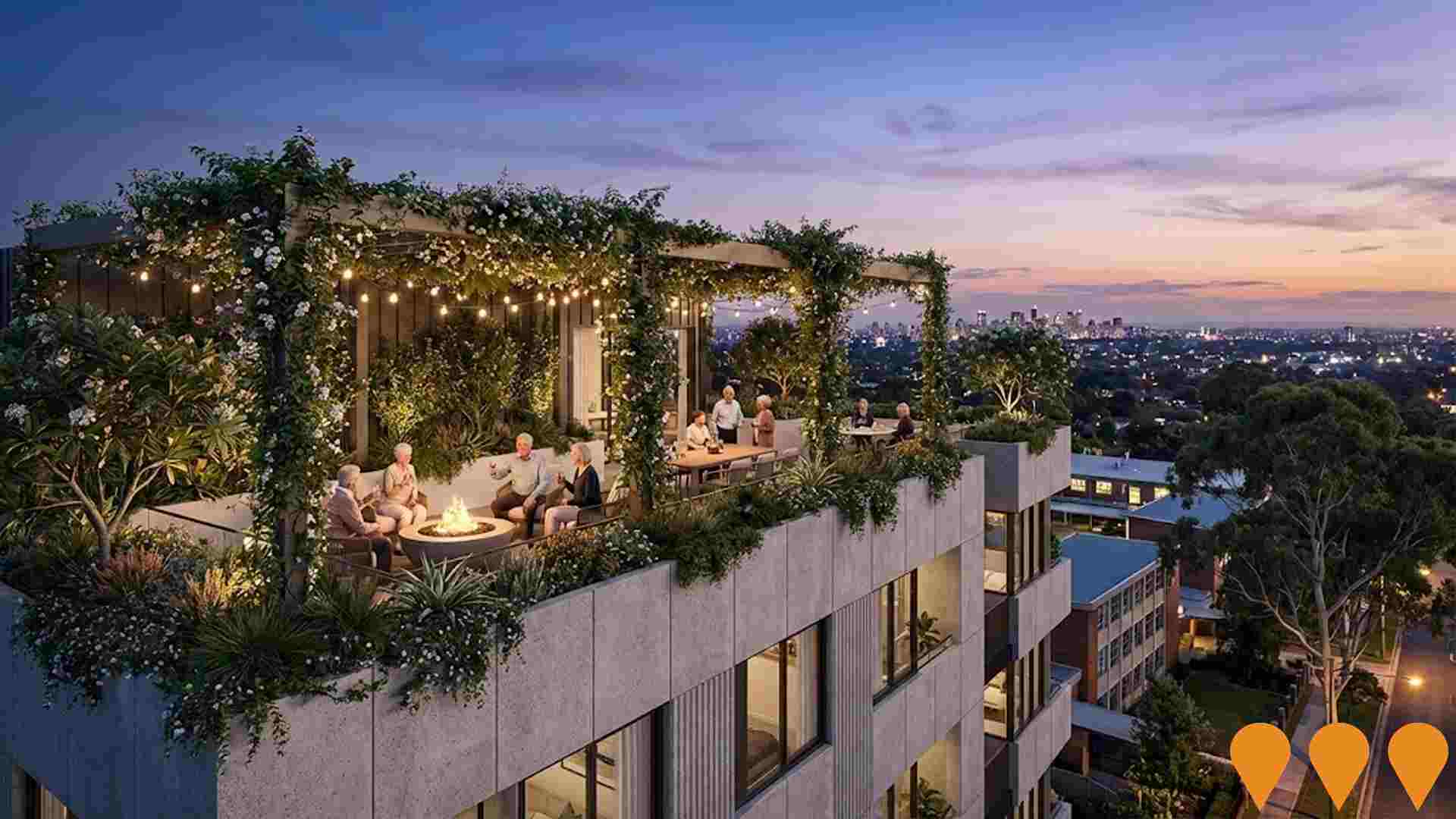
Eastwood Shopping Centre Redevelopment
Approved mixed-use redevelopment of the 1970s shopping centre by Henbon Australia and designed by AJC Architects. The project delivers new retail, commercial, and residential spaces, featuring an 'Eat Street', a fresh food market, and a landscaped communal space (the 'big backyard'). The design, inspired by the JieFang concept, includes 441 apartments and over 21,500m2 of commercial and retail GFA. The project includes public domain upgrades to Rowe Street Mall.
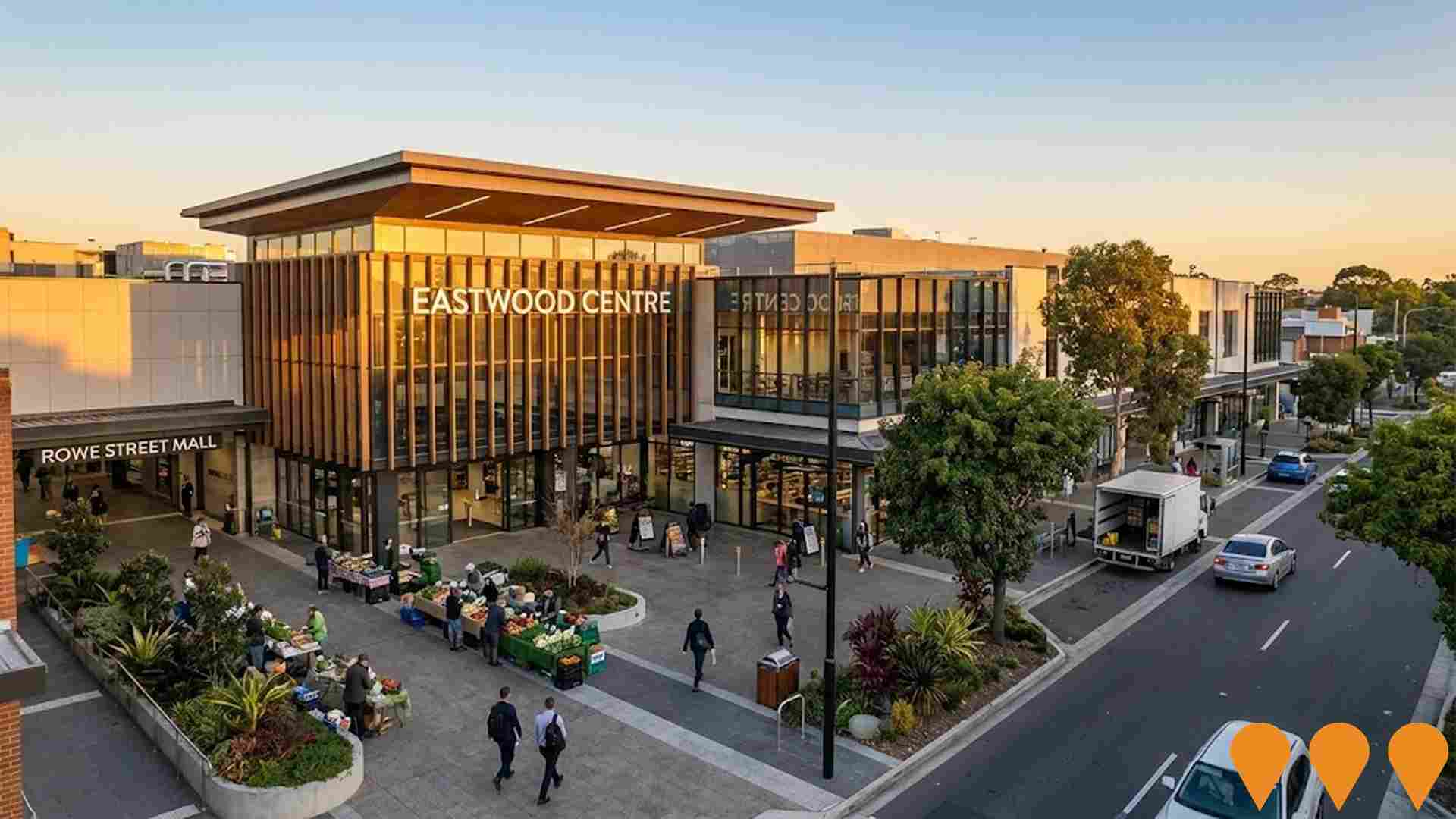
53-61 Rawson Street Mixed-Use Development
Mixed-use redevelopment comprising two towers (36 and 33 storeys) with a full-line supermarket, 3,147 sqm of specialty retail, 7,430 sqm of commercial office space and 420 residential apartments in the heart of Epping Town Centre.
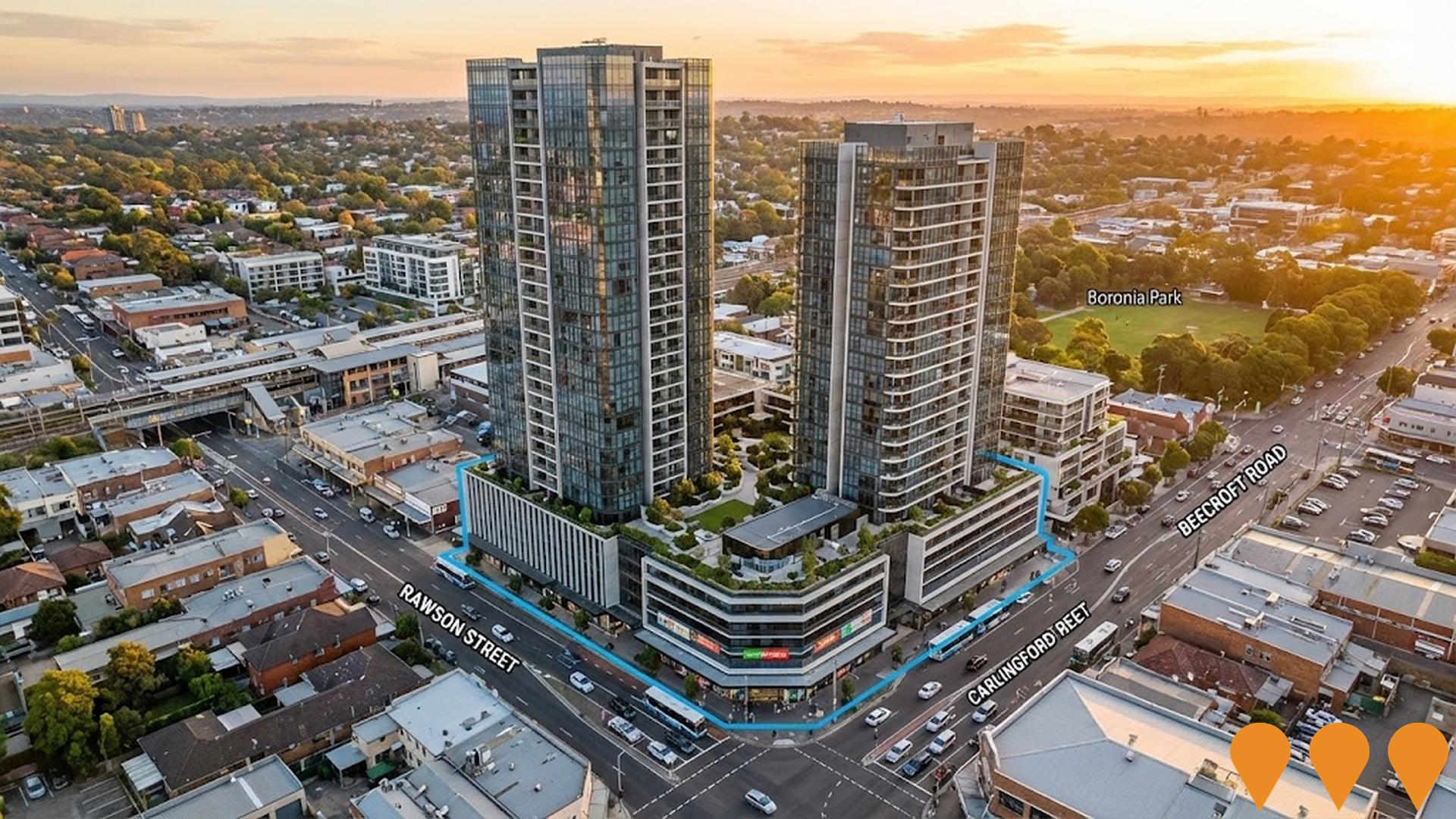
West Ryde Multi-Sports Facility
A major new multi-sports facility on the former Marsden High School site at 22 Winbourne Street, West Ryde. Features a 5,000sqm indoor centre with 4 multipurpose courts, 29 outdoor hard-surface netball courts (all sealed), cafe, communal areas and parking for approximately 296 vehicles. Supports netball, basketball, futsal, badminton and other sports. Construction commenced April 2025 with completion expected early 2026.
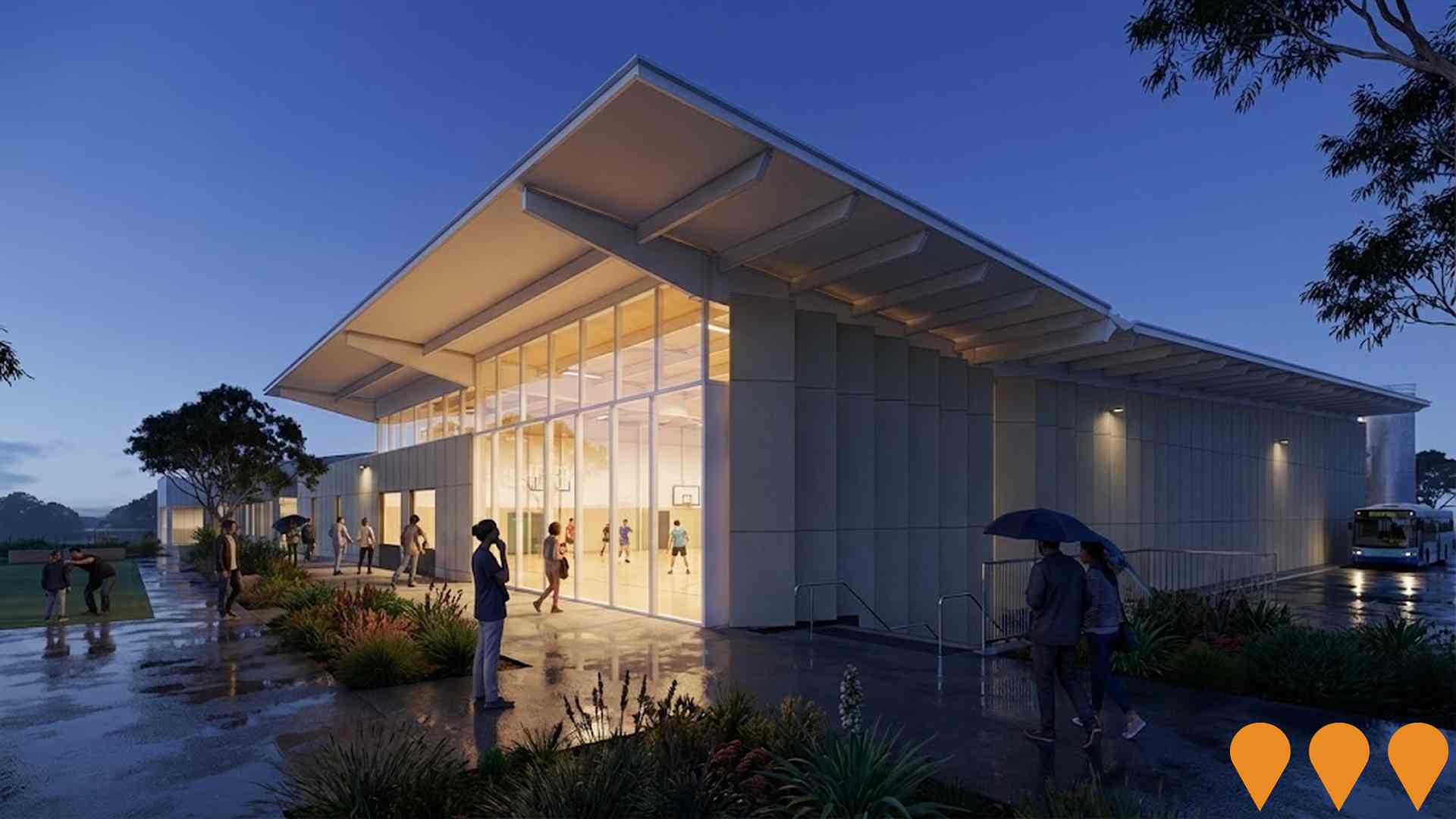
Epping Bridge Project
Replacement of the existing 5-lane Epping Bridge with a new 7-lane bridge across the railway line. The $220 million project jointly funded by Australian and NSW governments includes road improvements to Beecroft Road, Blaxland Road, and Epping Road approaches, enhanced pedestrian/cyclist facilities with shared walking and cycling path, traffic signal upgrades, and new safety screens to reduce congestion and improve safety for over 63,000 daily users. Construction expected to commence mid-2025 and take approximately 5 years to complete.
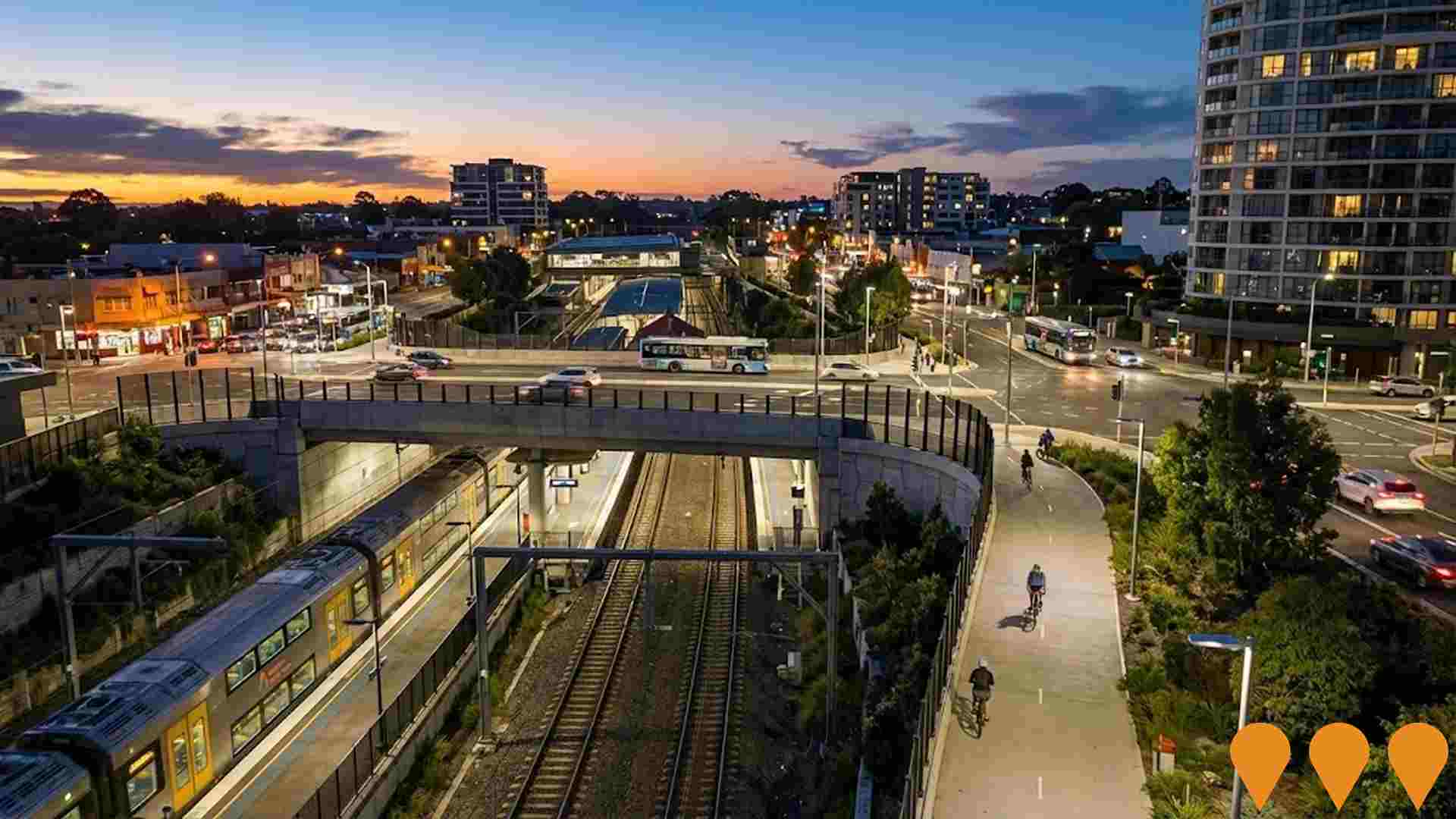
Eastwood Central Precinct Project
Development of a new multi-storey carpark at Glen Reserve to replace the aging Glen Street Carpark, with future plans for civic uses including library and plaza. Includes flood mitigation through detention tank installation.
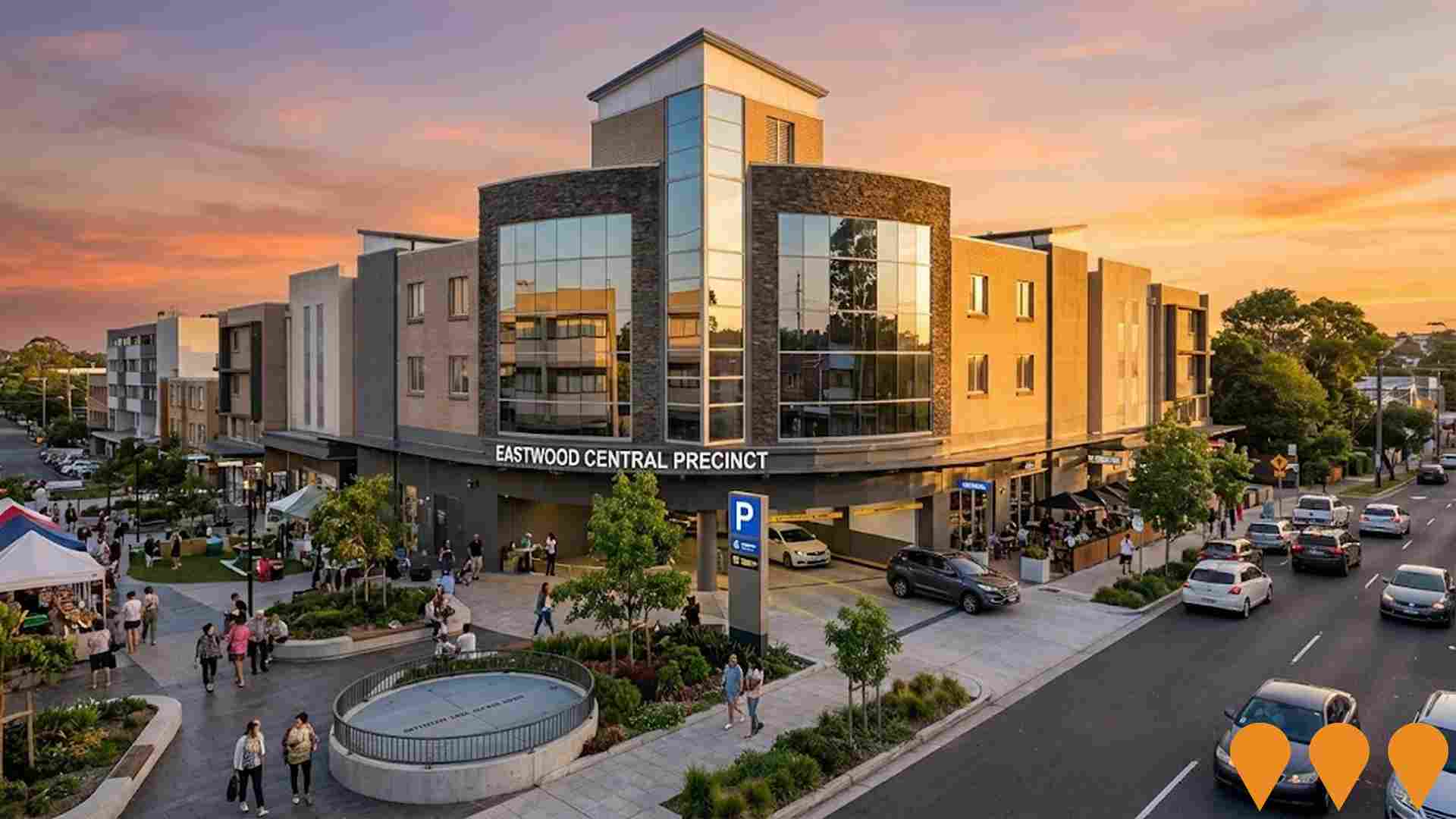
Eastwood Masterplan
City of Ryde is preparing a masterplan to guide the future of Eastwood town centre, including upgrades to public spaces, higher quality development, heritage protection, flooding solutions and infrastructure to support growth. Early engagement ran in April-May 2024; Council considered outcomes on 23 July 2024 and endorsed next steps for technical studies and drafting. Draft masterplan is anticipated for public exhibition in the second half of 2025 before adoption.
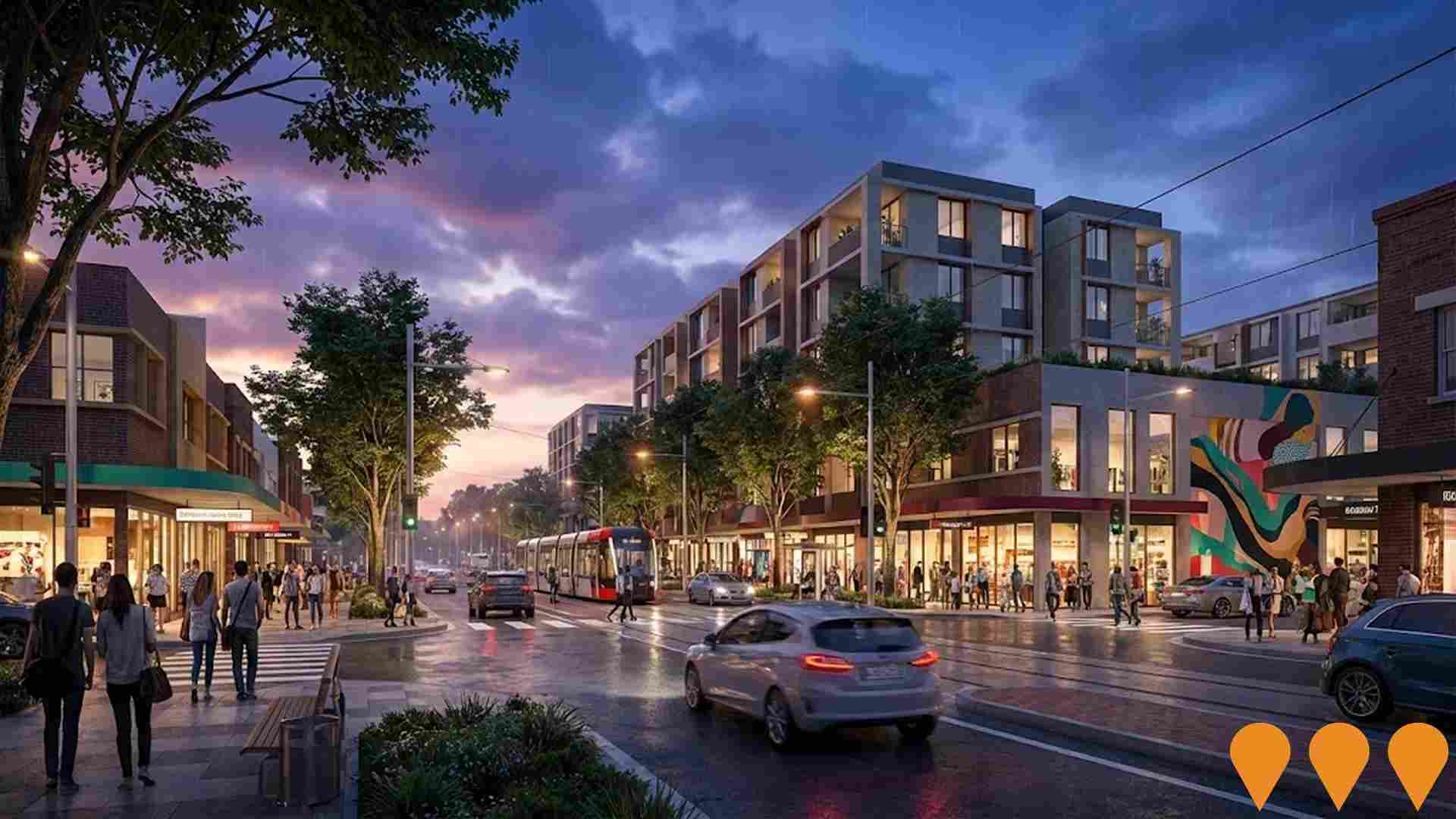
Employment
The labour market in Eastwood demonstrates typical performance when compared to similar areas across Australia
Eastwood has a highly educated workforce with significant representation in the technology sector. Its unemployment rate is 4.0%, lower than Greater Sydney's 4.2%.
In June 2025, Eastwood had 11,388 residents employed, with an unemployment rate of 3.7% and workforce participation at 57.2%. The dominant employment sectors are health care & social assistance, professional & technical services, and retail trade. Construction is under-represented at 6.4%, compared to Greater Sydney's 8.6%.
Between June 2024 and June 2025, Eastwood saw employment increase by 12.2% while the labour force grew by 11.2%, leading to a decrease in unemployment rate of 0.9 percentage points. In contrast, Greater Sydney had employment growth of 2.6%, labour force growth of 2.9%, and an unemployment rate rise of 0.3 percentage points. Jobs and Skills Australia's national employment forecasts from May 2025 project a 6.6% increase in employment over five years and 13.7% over ten years. Applying these projections to Eastwood's employment mix suggests local growth of approximately 7.1% over five years and 14.4% over ten years, assuming constant population projections for illustrative purposes.
Frequently Asked Questions - Employment
Income
Income levels align closely with national averages, indicating typical economic conditions for Australian communities according to AreaSearch analysis
AreaSearch's latest postcode level ATO data for financial year 2022 shows that Eastwood has a high national median income of $47,235 and an average income of $72,452. This contrasts with Greater Sydney's median income of $56,994 and average income of $80,856. Based on Wage Price Index growth of 12.61% since financial year 2022, current estimates for Eastwood are approximately $53,191 (median) and $81,588 (average) as of September 2025. According to the 2021 Census, Eastwood's household income ranks at the 63rd percentile ($1,953 weekly), with personal income at the 41st percentile. The largest income segment in Eastwood comprises 30.6% earning $1,500 - 2,999 weekly (6,132 residents). High housing costs consume 18.6% of income, but strong earnings place disposable income at the 59th percentile. Eastwood's SEIFA income ranking places it in the 8th decile.
Frequently Asked Questions - Income
Housing
Eastwood displays a diverse mix of dwelling types, with above-average rates of outright home ownership
Eastwood's dwelling structure, as per the latest Census, consisted of 53.2% houses and 46.8% other dwellings (semi-detached, apartments, 'other' dwellings). In comparison, Sydney metro had 42.9% houses and 57.1% other dwellings. Home ownership in Eastwood stood at 31.1%, with mortgaged dwellings at 29.2% and rented ones at 39.7%. The median monthly mortgage repayment was $2,750, higher than Sydney metro's $2,600. The median weekly rent figure in Eastwood was $450, compared to Sydney metro's $460. Nationally, Eastwood's mortgage repayments were significantly higher than the Australian average of $1,863, and rents were substantially above the national figure of $375.
Frequently Asked Questions - Housing
Household Composition
Eastwood features high concentrations of group households, with a higher-than-average median household size
Family households account for 75.3% of all households, including 38.8% couples with children, 25.5% couples without children, and 9.7% single parent families. Non-family households make up the remaining 24.7%, with lone person households at 19.8% and group households comprising 4.9%. The median household size is 2.8 people, larger than the Greater Sydney average of 2.5.
Frequently Asked Questions - Households
Local Schools & Education
Eastwood shows strong educational performance, ranking in the upper quartile nationally when assessed across multiple qualification and achievement indicators
Eastwood's educational attainment is notably high, with 50.9% of residents aged 15 years and above holding university qualifications. This figure exceeds the national average of 30.4% and the NSW state average of 32.2%, indicating a significant educational advantage for the area. Bachelor degrees are the most common qualification at 31.0%, followed by postgraduate qualifications (17.3%) and graduate diplomas (2.6%). Vocational pathways account for 19.9% of qualifications among those aged 15 years and above, with advanced diplomas making up 10.3% and certificates 9.6%.
Educational participation is high in Eastwood, with 30.7% of residents currently enrolled in formal education. This includes 8.7% in primary education, 8.4% in tertiary education, and 6.2% pursuing secondary education. The area has five schools with a combined enrollment reaching 2,550 students as of the latest data available. Eastwood's schools demonstrate significant socio-educational advantages and academic achievement, with an ICSEA score of 1118. Education provision is balanced, with four primary schools and one secondary school serving distinct age groups.
Frequently Asked Questions - Education
Schools Detail
Nearby Services & Amenities
Transport
Transport servicing is high compared to other areas nationally based on assessment of service frequency, route connectivity and accessibility
Eastwood has 117 active public transport stops operating within its boundaries. These comprise a mix of train and bus services. There are 33 individual routes servicing these stops, collectively providing 4,862 weekly passenger trips.
Transport accessibility is rated as excellent, with residents typically located 149 meters from the nearest transport stop. Service frequency averages 694 trips per day across all routes, equating to approximately 41 weekly trips per individual stop.
Frequently Asked Questions - Transport
Transport Stops Detail
Health
Eastwood's residents boast exceedingly positive health performance metrics with very low prevalence of common health conditions across all age groups
Eastwood's health outcomes show exceptional results across all age groups, with a very low prevalence of common health conditions. Approximately 55% (~11,082 people) have private health cover, compared to Greater Sydney's 62.1%.
The most prevalent medical conditions are diabetes (4.7%) and arthritis (4.6%). About 79.9% of residents report no medical ailments, compared to 77.6% in Greater Sydney. Eastwood has a higher proportion of seniors aged 65 and over at 18.9% (3,797 people), compared to Greater Sydney's 16.3%. Seniors' health outcomes align with the general population's profile.
Frequently Asked Questions - Health
Cultural Diversity
Eastwood is among the most culturally diverse areas in the country based on AreaSearch assessment of a range of language and cultural background related metrics
Eastwood has a culturally diverse population, with 68.8% speaking a language other than English at home and 60.9% born overseas as of the latest data. Christianity is the predominant religion in Eastwood, making up 38.7%. However, Buddhism is more prevalent here at 7.0%, compared to Greater Sydney's average of 4.3%.
In terms of ancestry, Chinese comprise 42.8% of Eastwood's population, higher than Greater Sydney's 20.9%. English and Other groups each make up 10.1%. Korean is notably overrepresented at 7.7%, Lebanese at 0.9%, and Sri Lankan at 0.5%, compared to regional averages.
Frequently Asked Questions - Diversity
Age
Eastwood's population is slightly older than the national pattern
The median age in Eastwood is 39 years, which is slightly higher than Greater Sydney's average of 37 years and very close to Australia's national average of 38 years. Compared to Greater Sydney, the cohort aged 65-74 is notably over-represented in Eastwood at 10.4%, while those aged 5-14 are under-represented at 10.2%. According to data from the 2021 Census, the population of those aged 15-24 has grown from 11.0% to 12.9%, while the cohort aged 55-64 has declined from 12.7% to 11.4%. By 2041, significant demographic changes are forecast for Eastwood. The population of those aged 75-84 is expected to grow by 82%, reaching 2,141 from 1,174. This growth will be led by residents aged 65 and older, who represent 59% of the anticipated population increase. Conversely, the cohorts aged 0-4 and 25-34 are expected to experience population declines.
